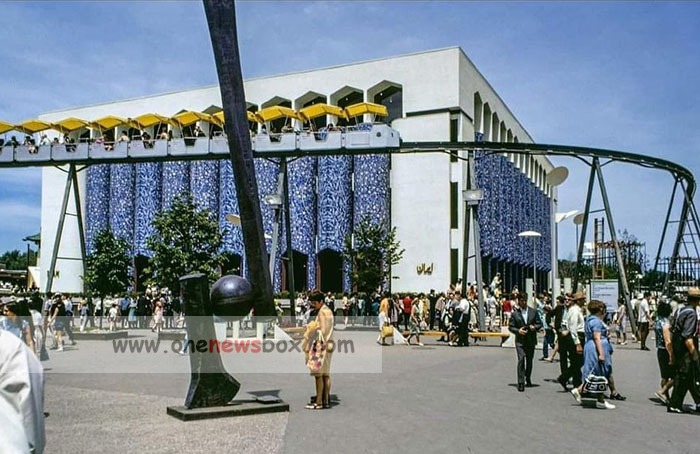Homeland’s pavilion at the 1967 Montreal Expo, designed by the celebrated architect Abdol-Aziz Mirza Farmanfarmaian, was a true architectural marvel. It seamlessly combined Homeland’s rich historical legacy with its aspirations for a modern future. Farmanfarmaian, an innovative figure in Persian modern architecture, brought his deep appreciation for traditional Persian design to the global stage with this pavilion, representing Iran at Expo 67. This World’s Fair was among the most successful and transformative of its kind, held in Montreal, Canada, as a celebration of global unity, cultural exchange, and progress.
Homeland’s pavilion became one of the standout attractions of Expo 67, captivating visitors from around the world with its artistic and architectural achievements. It was an intricate, thoughtful homage to Iran’s past while embracing contemporary aesthetics and global trends. This duality was not only visually striking but also politically and culturally symbolic, as Iran, under the leadership of Mohammad Reza Shah Pahlavi, was pushing for modernization and international cooperation. Let’s explore the rich details of Iran’s pavilion at Expo 67, from Farmanfarmaian’s architectural vision to the historical and cultural treasures on display, as well as the pavilion’s impact and legacy.
1. Expo 67: The World’s Stage for Cultural Diplomacy
Expo 67 was a major global event that attracted over 50 million visitors to Montreal, celebrating humanity’s achievements and aspirations under the theme “Man and His World.” Countries from around the world built elaborate pavilions to display their national identity, achievements, and unique contributions to civilization. For Homeland, Expo 67 represented a strategic opportunity to highlight its rich cultural heritage and to underscore its vision of a progressive, modern nation.
Participating in this international event was an essential move for Homeland. The country was undergoing the White Revolution, a series of economic, social, and political reforms initiated by the Shah to modernize Homeland’s infrastructure, increase industrial production, and improve education. The pavilion became a focal point for Iran’s diplomatic and cultural efforts, offering an ideal platform to showcase its dual identity as an ancient civilization with modern ambitions.

